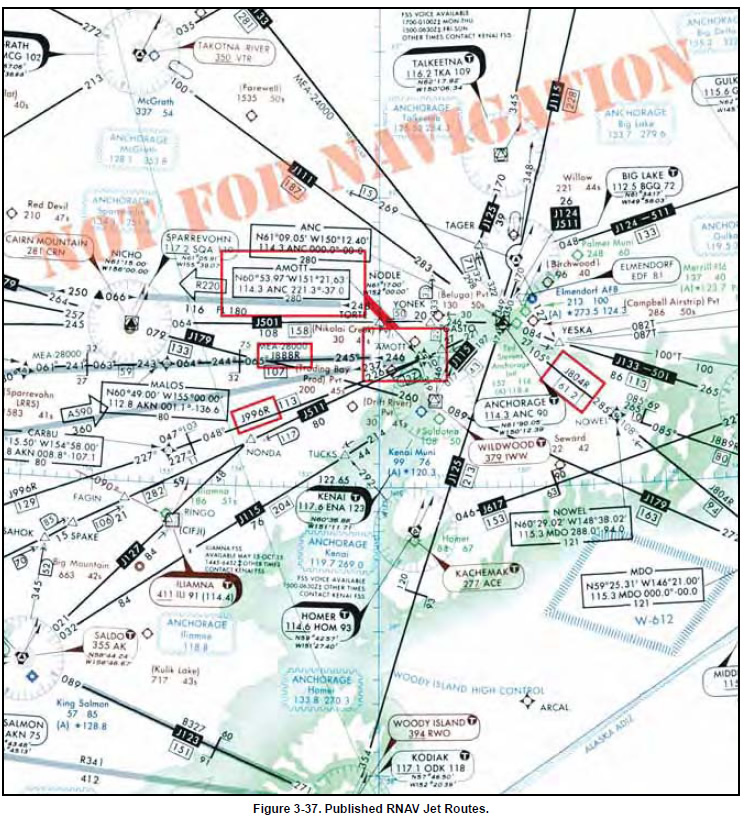|
USE OF DESIGNATORS IN COMMUNICATIONS
In voice communications, the basic letter of a designator
should be spoken in accordance with the ICAO
spelling alphabet. Where the prefixes K, U or S, specified
in 2., above, are used in voice communications,
they should be pronounced as:
K = “Kopter” U = “Upper” S = “Supersonic” as in the English language.
Where suffixes “F”, “G”, “Y” or “Z” specified in 3.,
above, are used, the flight crew should not be required
to use them in voice communications.
Example:
| A11 |
will be spoken Alfa Eleven |
| UR5 |
will be spoken Upper Romeo Five |
| KB34 |
will be spoken Kopter Bravo Thirty Four |
| UW456 F |
will be spoken Upper Whiskey Four Fifty Six |
Figure 3-36 depicts published RNAV routes in the
Gulf of Mexico (black Q100, Q102, and Q105) that
have been added to straighten out the flight segments
and provide an alternative method of navigation to the
LF airway (brown G26), that has since been terminated
in this case. The “Q” designation is derived from
the list of basic route designators previously covered,
and correlates with the description for RNAV routes
that do not form part of the regional networks of ATS
routes. Notice the indirect reference to the RNAV
requirement, with the note, “Navigational Equipment
Other than LF or VHF Required.”

Notice in Figure 3-37 that this en route chart
excerpt depicts three published RNAV jet routes,
J804R, J888R, and J996R. The “R” suffix is a supplementary
route designator denoting an RNAV
route. The overlapping symbols for the AMOTT
intersection and waypoint indicate that AMOTT
can be identified by conventional navigation or by
latitude and longitude coordinates. Although coordinates
were originally included for aircraft equipped
with INS systems, they are now a good way to cross
check between the coordinates on the chart and in the
FMS or GPS databases to ensure you are tracking on
your intended en route course. The AMOTT RNAV
waypoint includes bearing and distance from the
ANCHORAGE VORTAC. In an effort to simplify
the conversion to RNAV, some controlling agencies outside the U.S. have simply designated all conventional
routes as RNAV routes at a certain flight
level.

|


